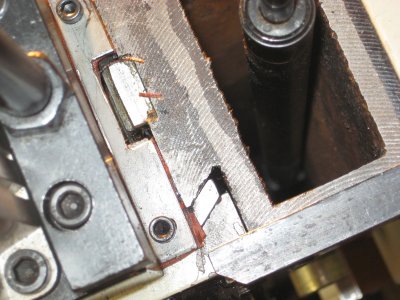I should probably keep my fingers away from the keyboard, but I don't understand. I have a CNC Seig X2, which mechanically similar. I don't see a picture of the 3990 at LMS, but it seems to be the same dovetail column design used by many models.
The nature of a dovetail slide is that the gibs force the two parts together. The column and the spindle box base (SPD) will be drawn together until the base of the column dovetail contacts the base of the SPD, or until the tops of the dovetails contact. It is impossible to have both in contact and still have movement. The bases of the dovetails are usually the surfaces used, and are ground true or scraped true in high dollar machines. The tops are not usually used because of the increased surface related friction.And They are avoided because there are often things mounted to them,like leadscrew nuts and in the manual mill's case the rack.
Shims between the column and the SPD will work, but it is not the best solution. If it was me, as soon as the current project is done, I'd take the spindle housing off the SPD and the column off the mill and figure out why you aren't getting the contact you should. My wild guess is that the weight of the head has worn the bottom of the SPD dovetail on the downward side more than the top. So now the gibs tighten on the top side, but the bottom can still rock. You can get an amazing amount of wear over time. I made the mistake of putting a vice in the center of my table and making parts for 4 years. Now I can't get full X travel unless the table is floppy in the center. There always seems to be something to fix.
Larry


